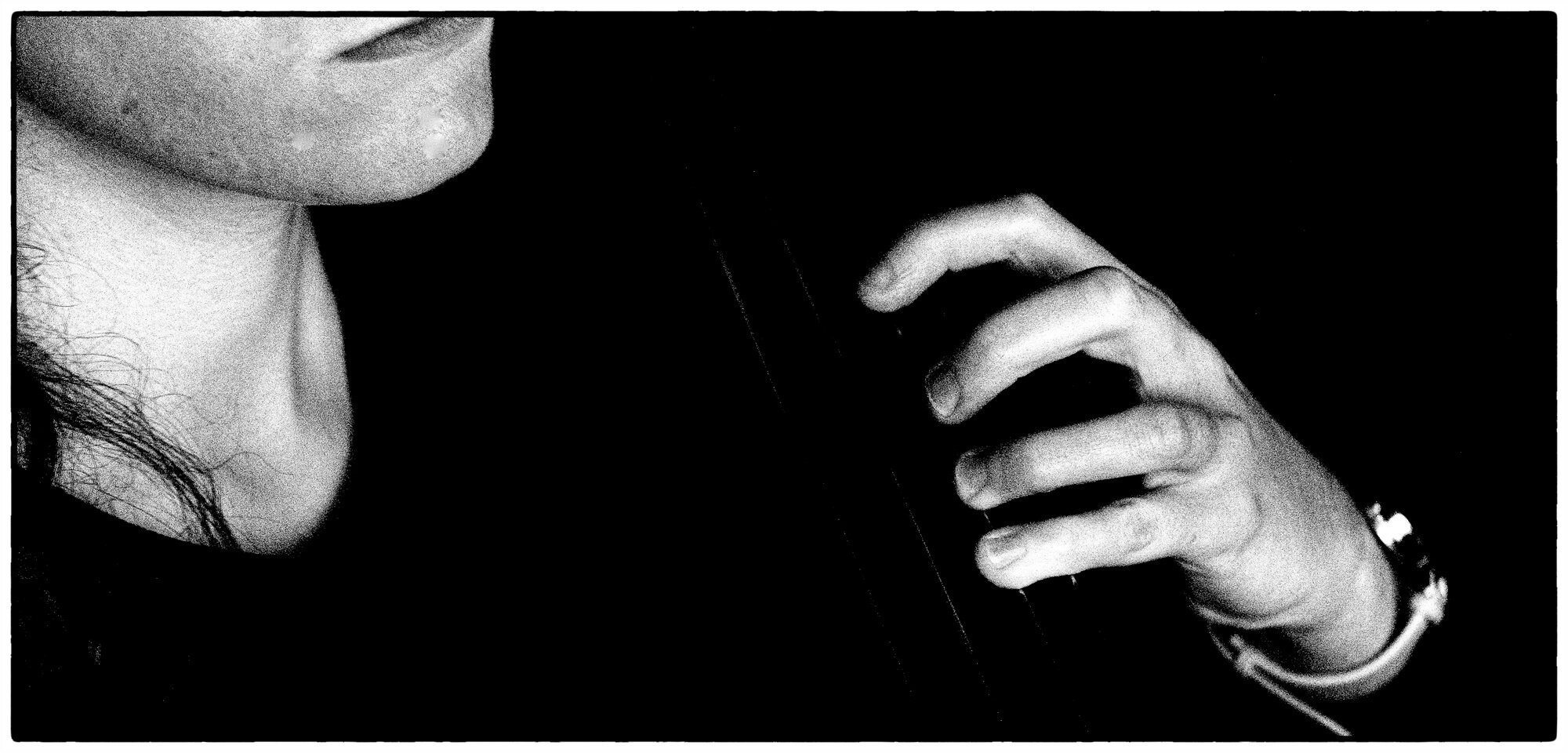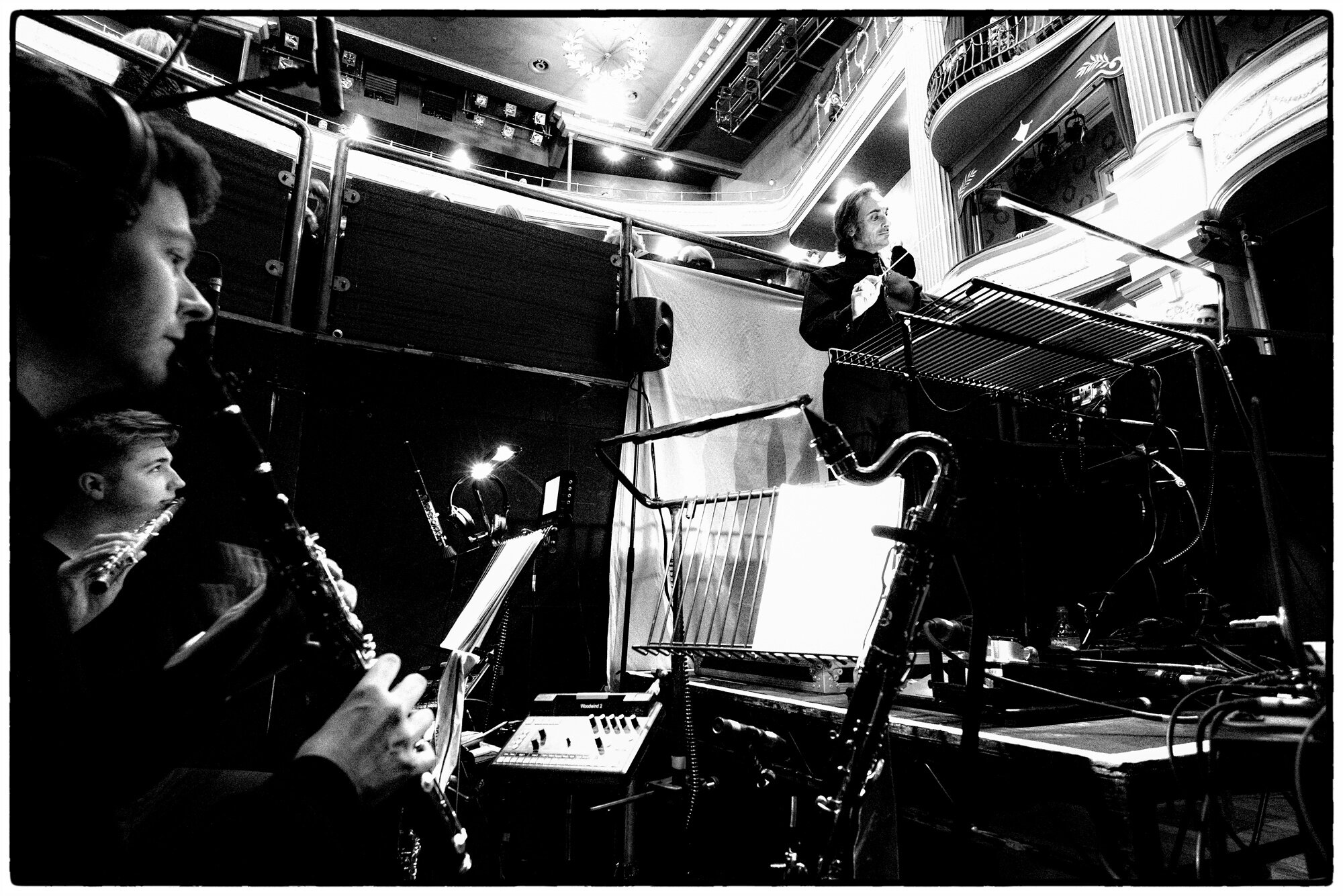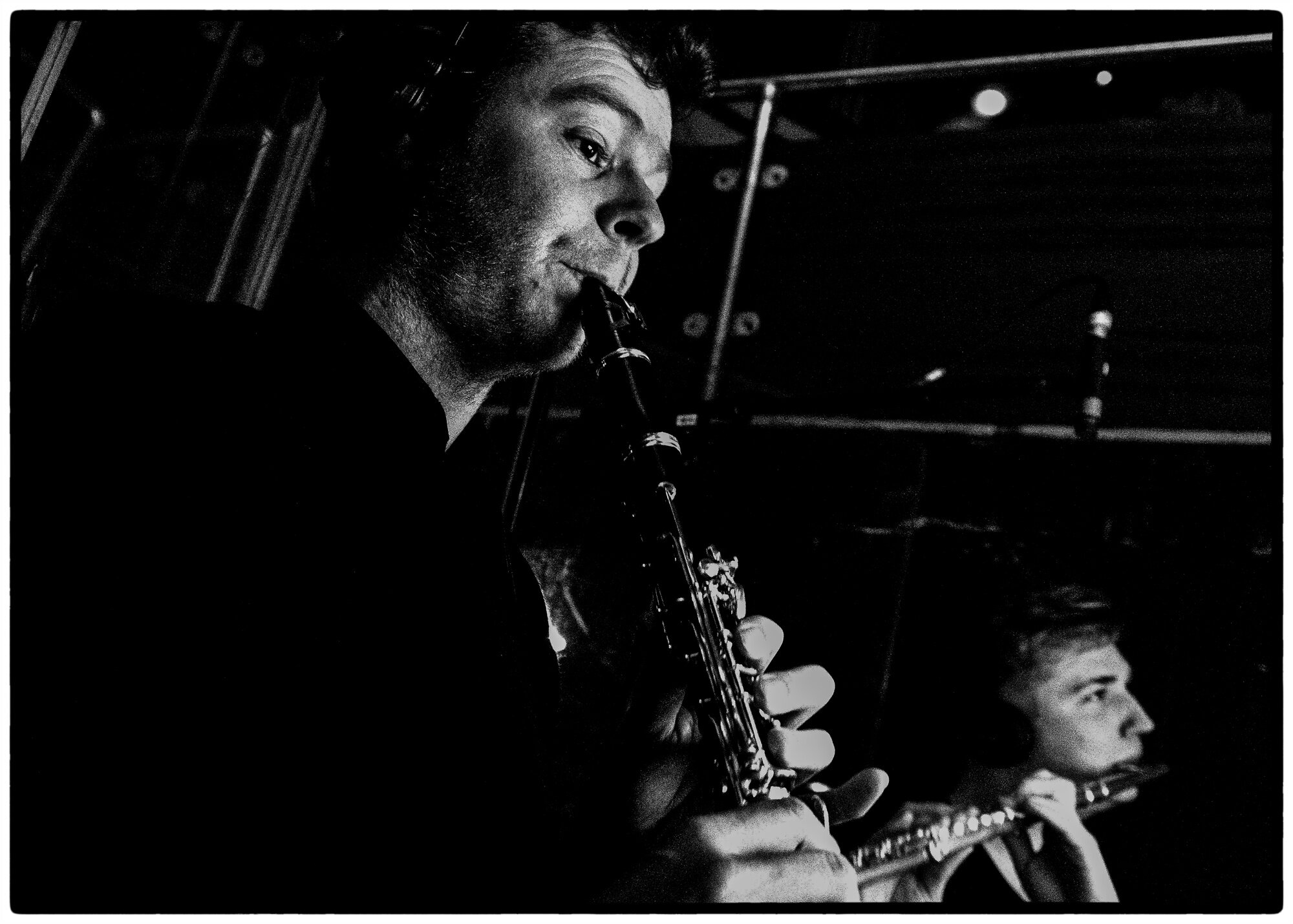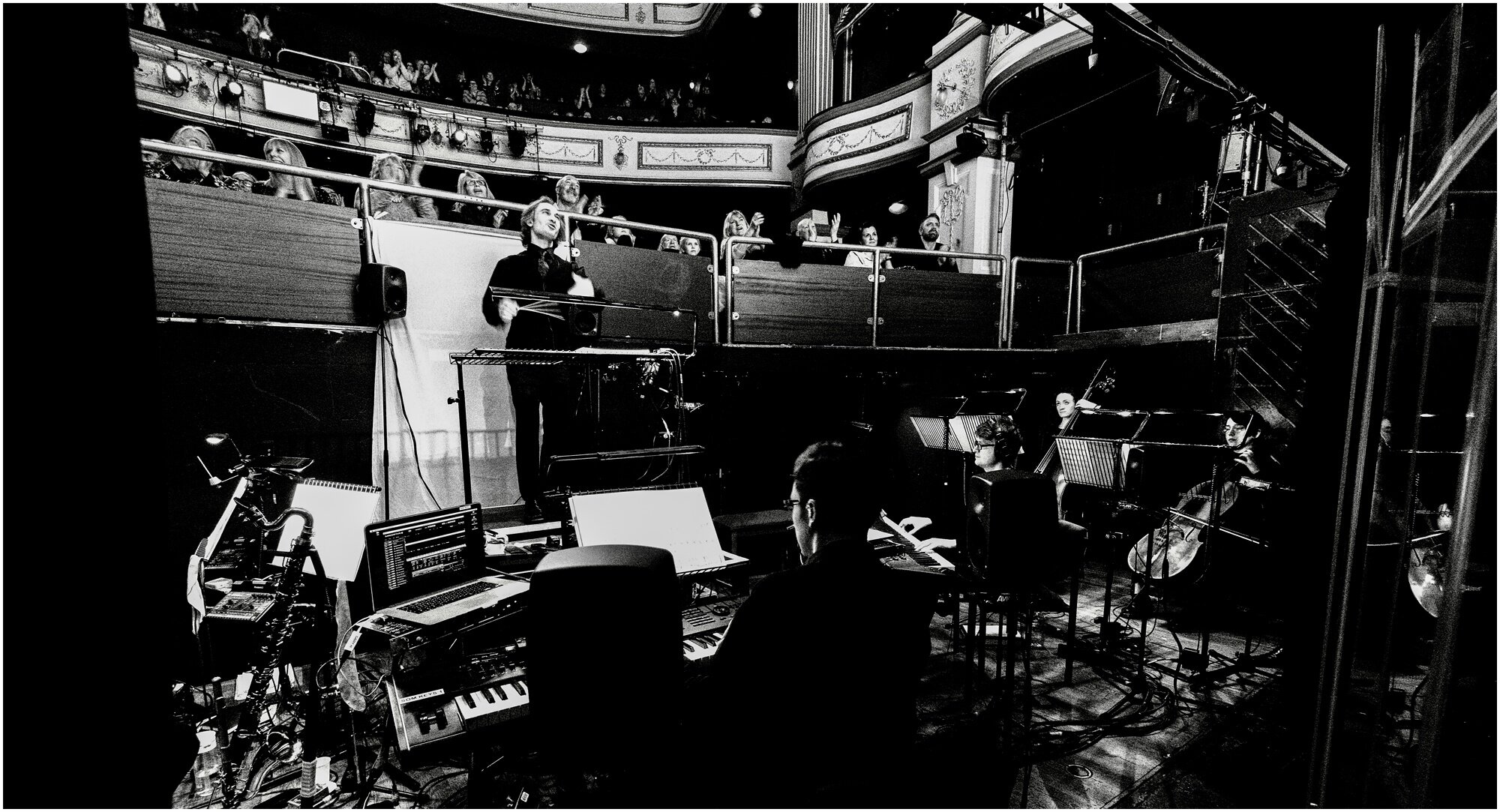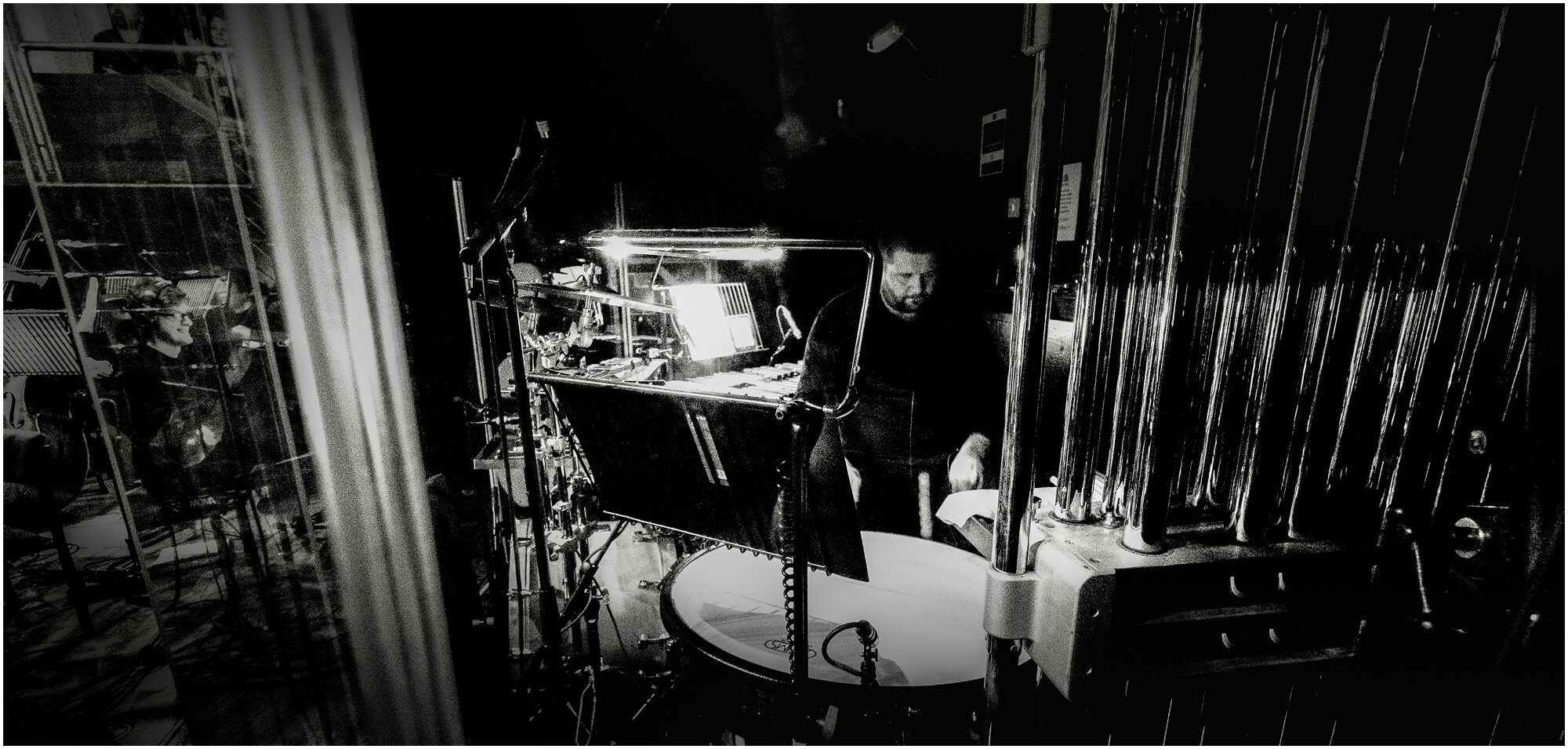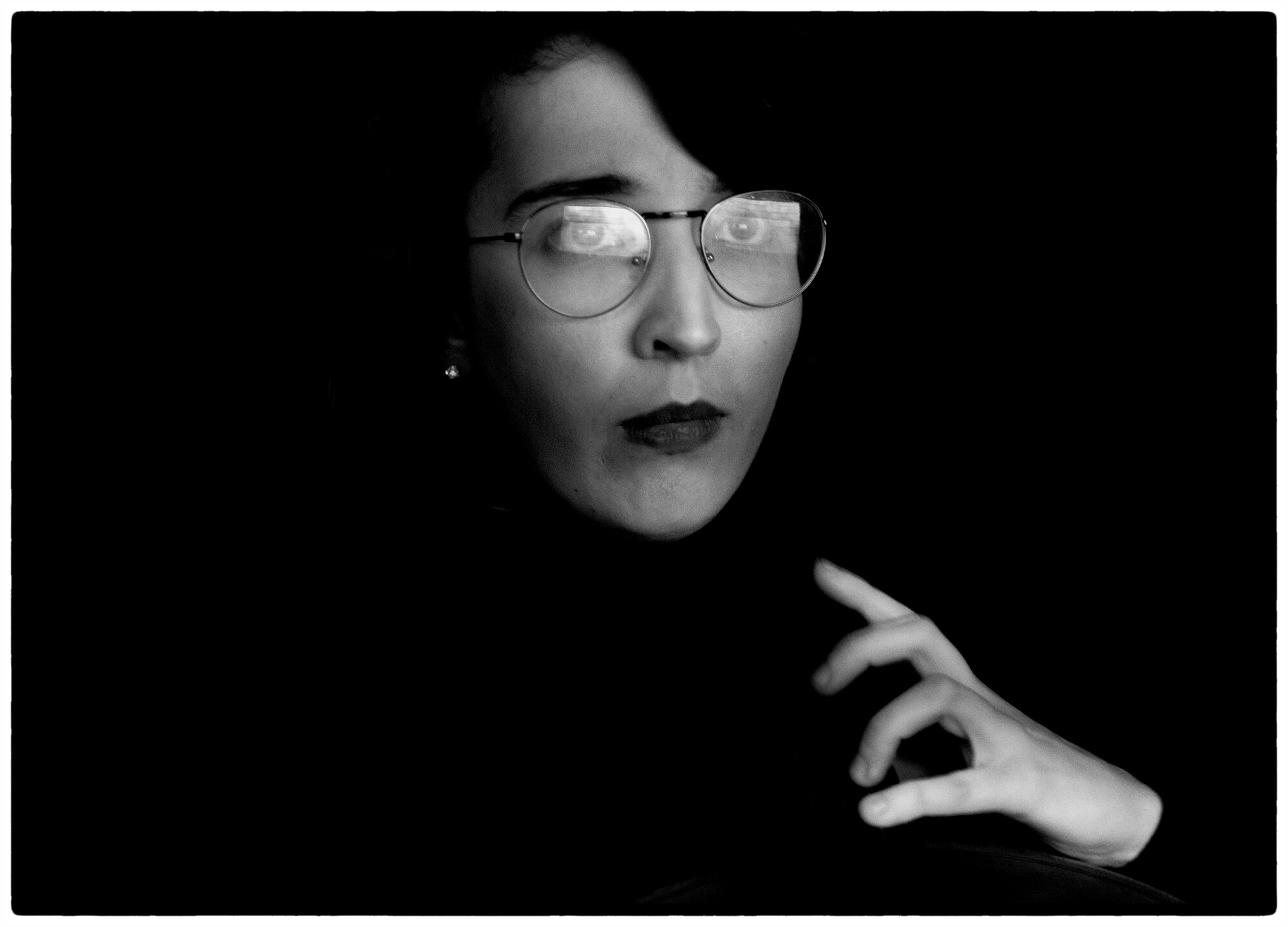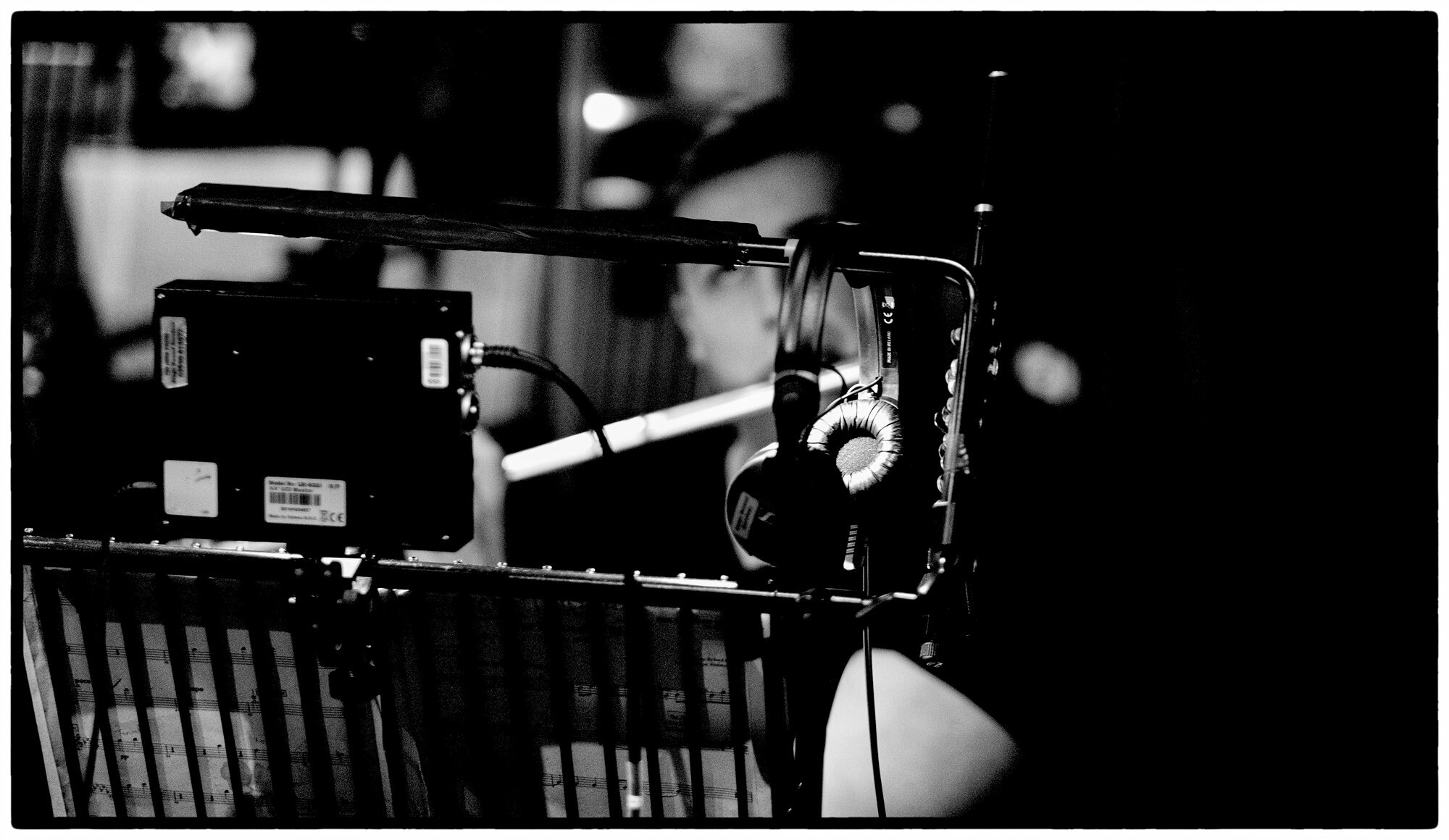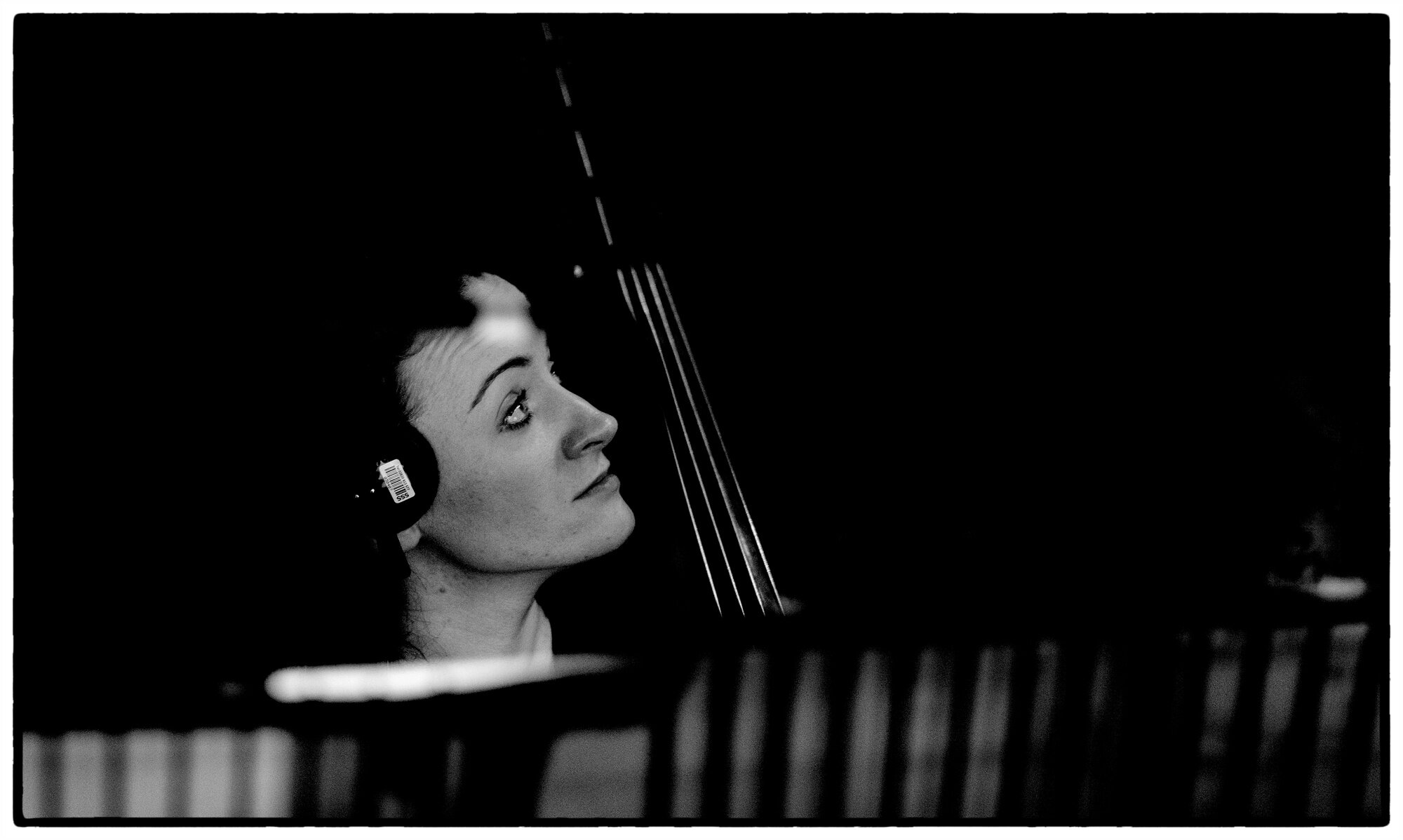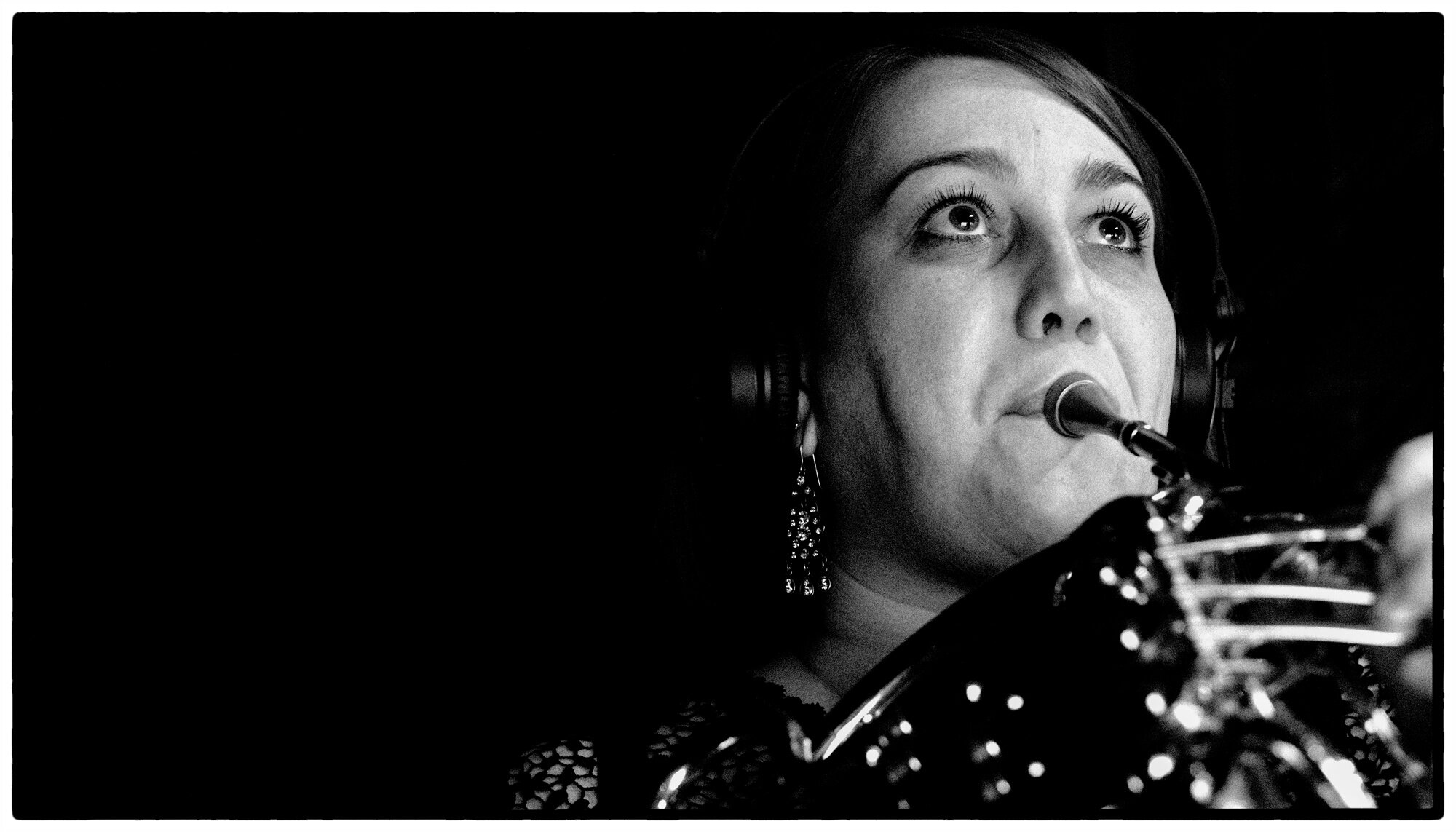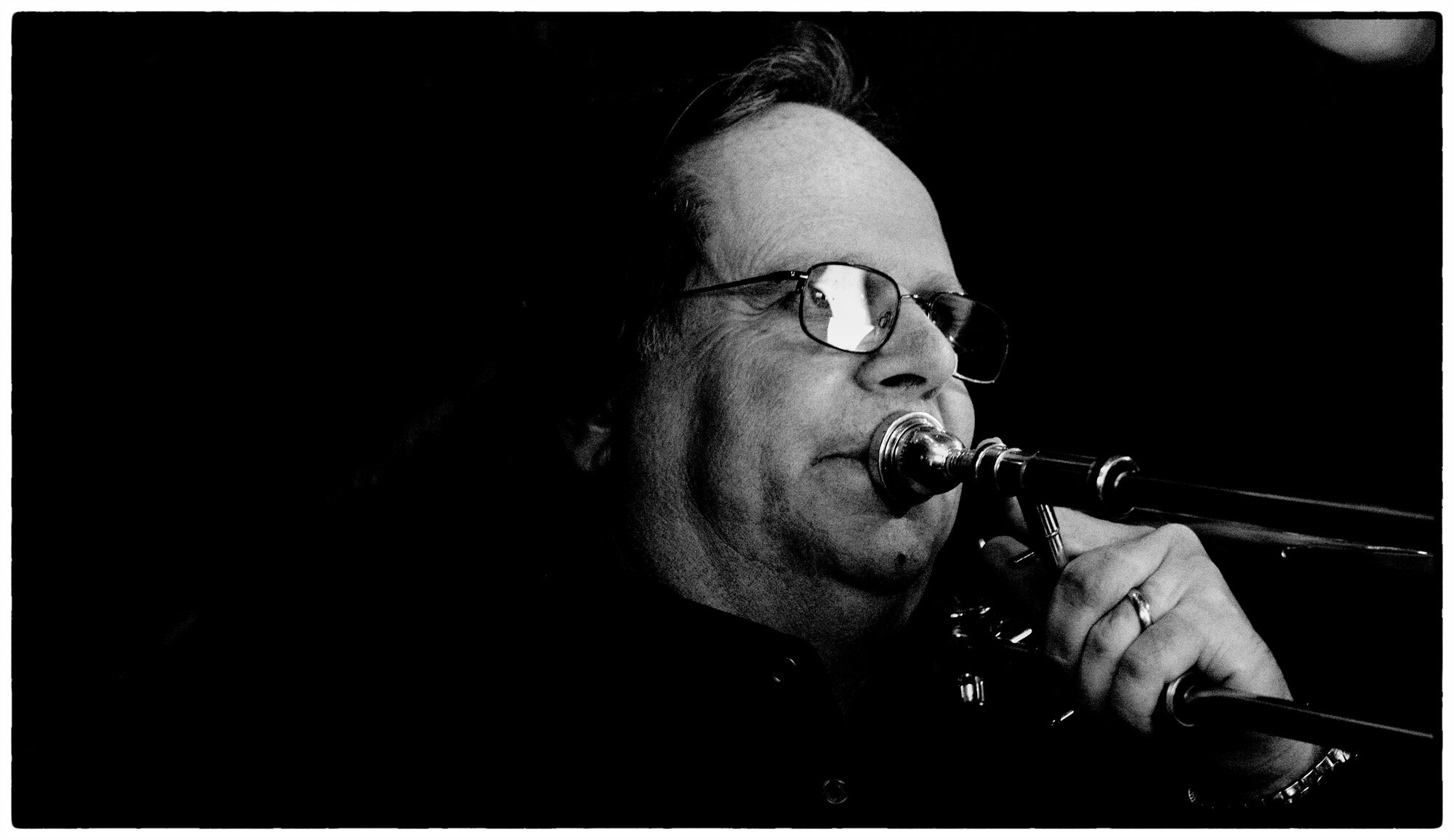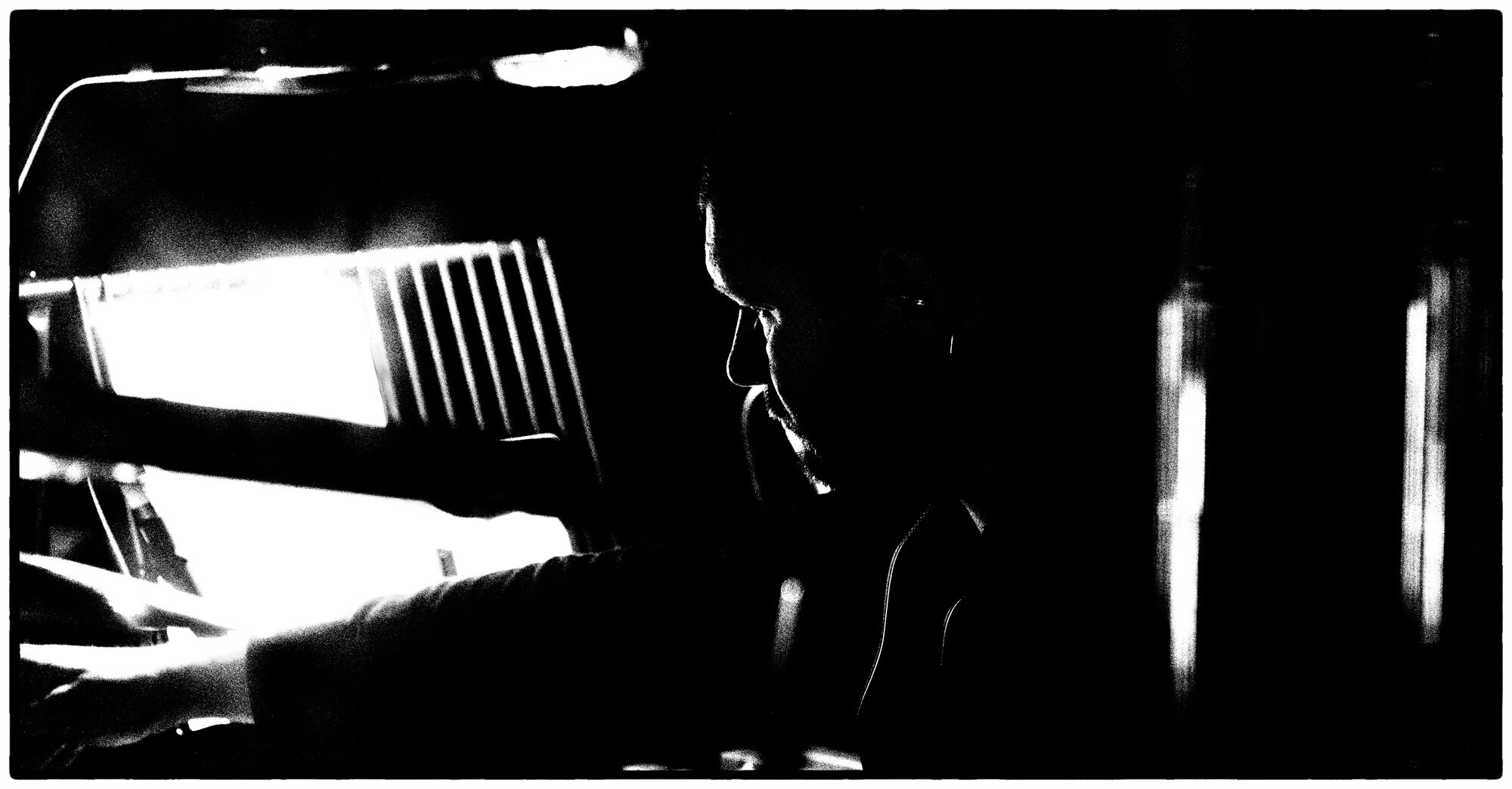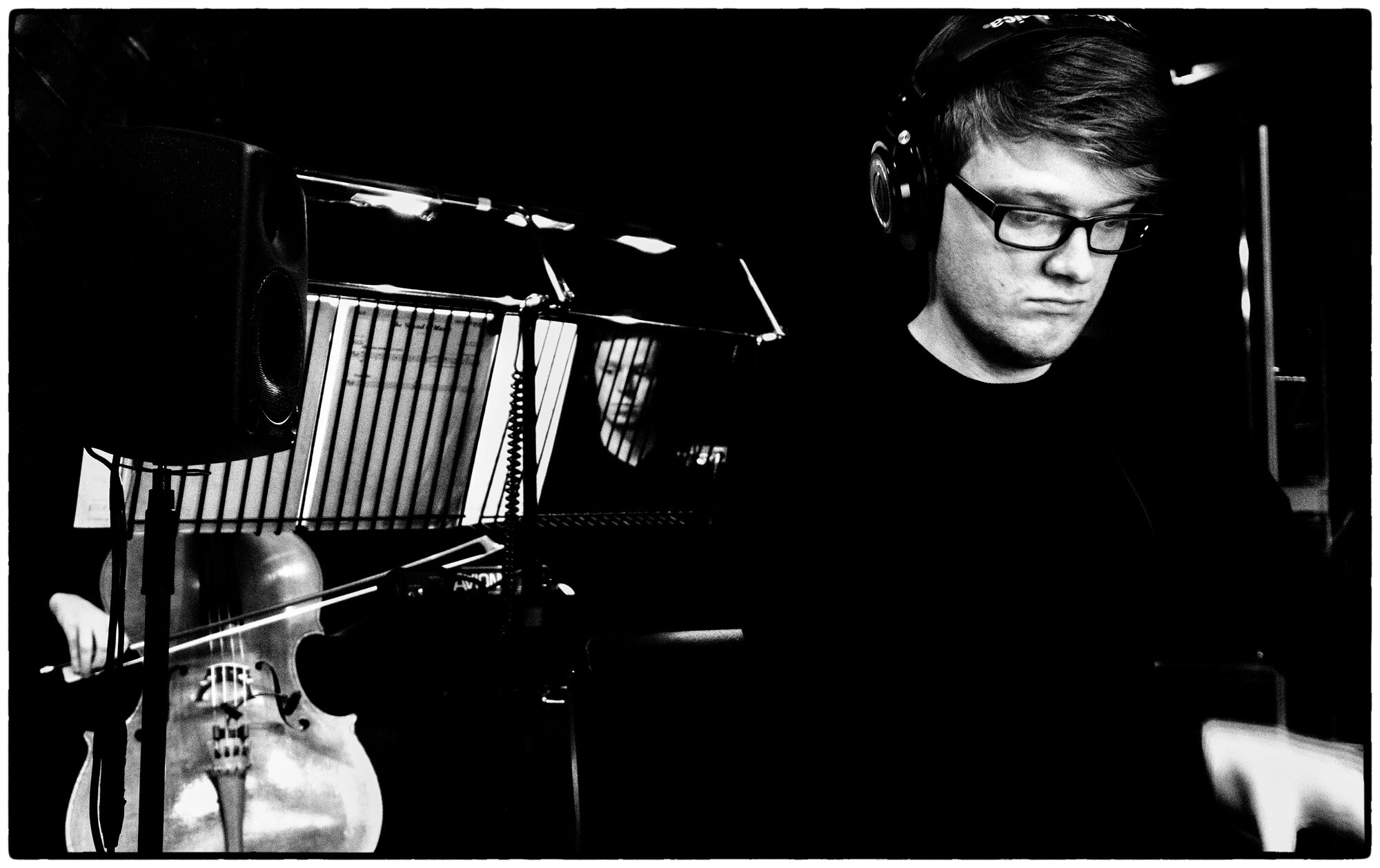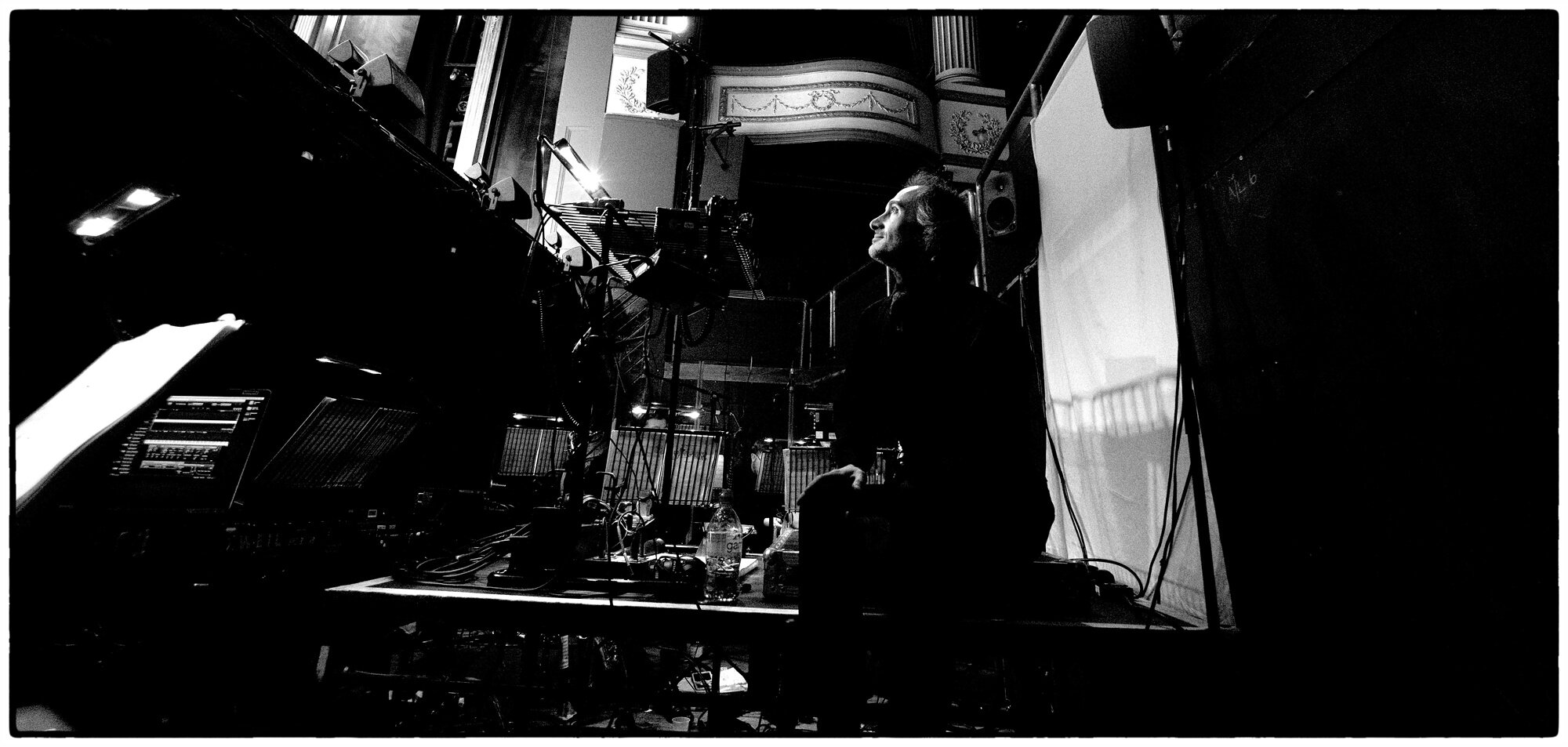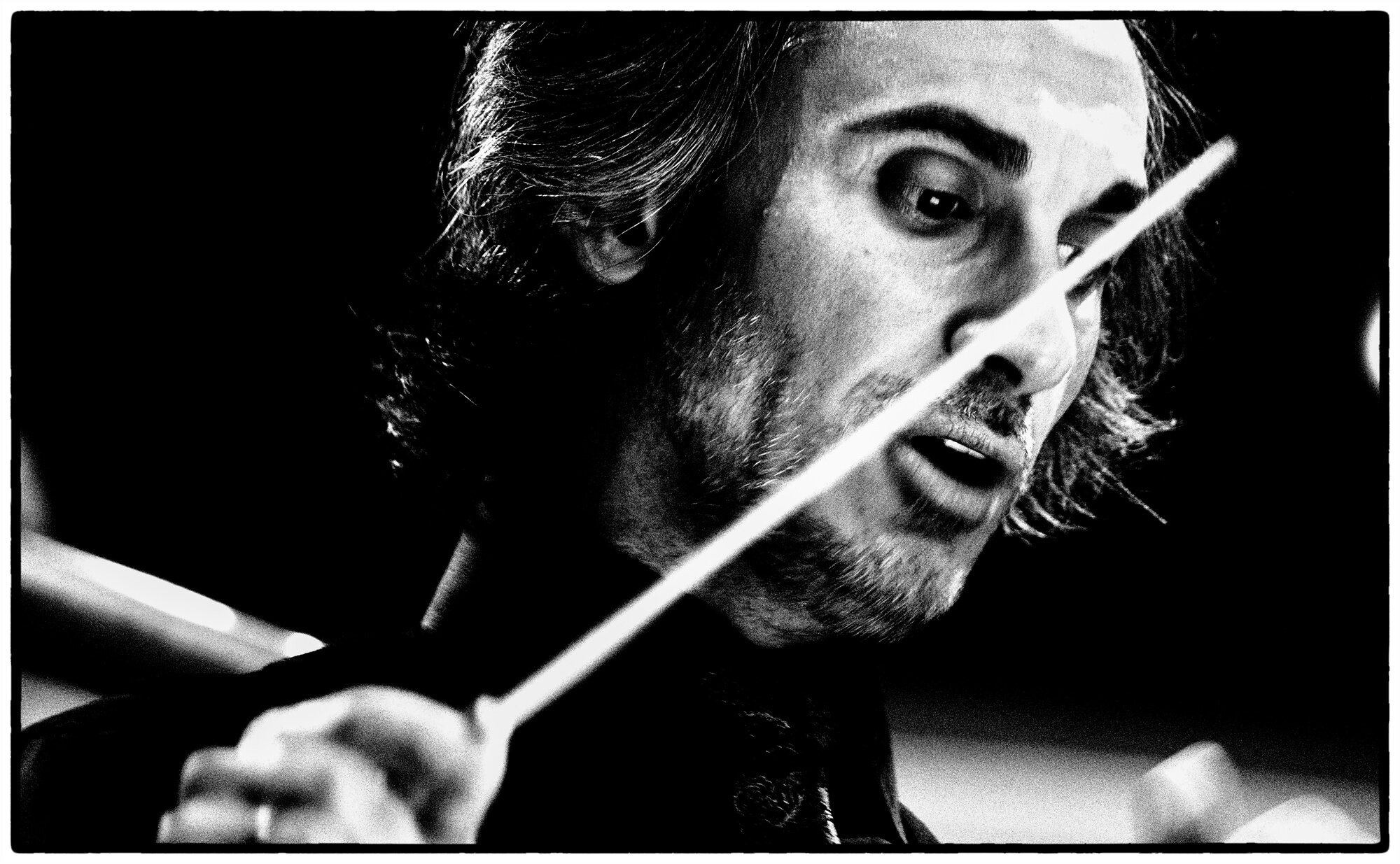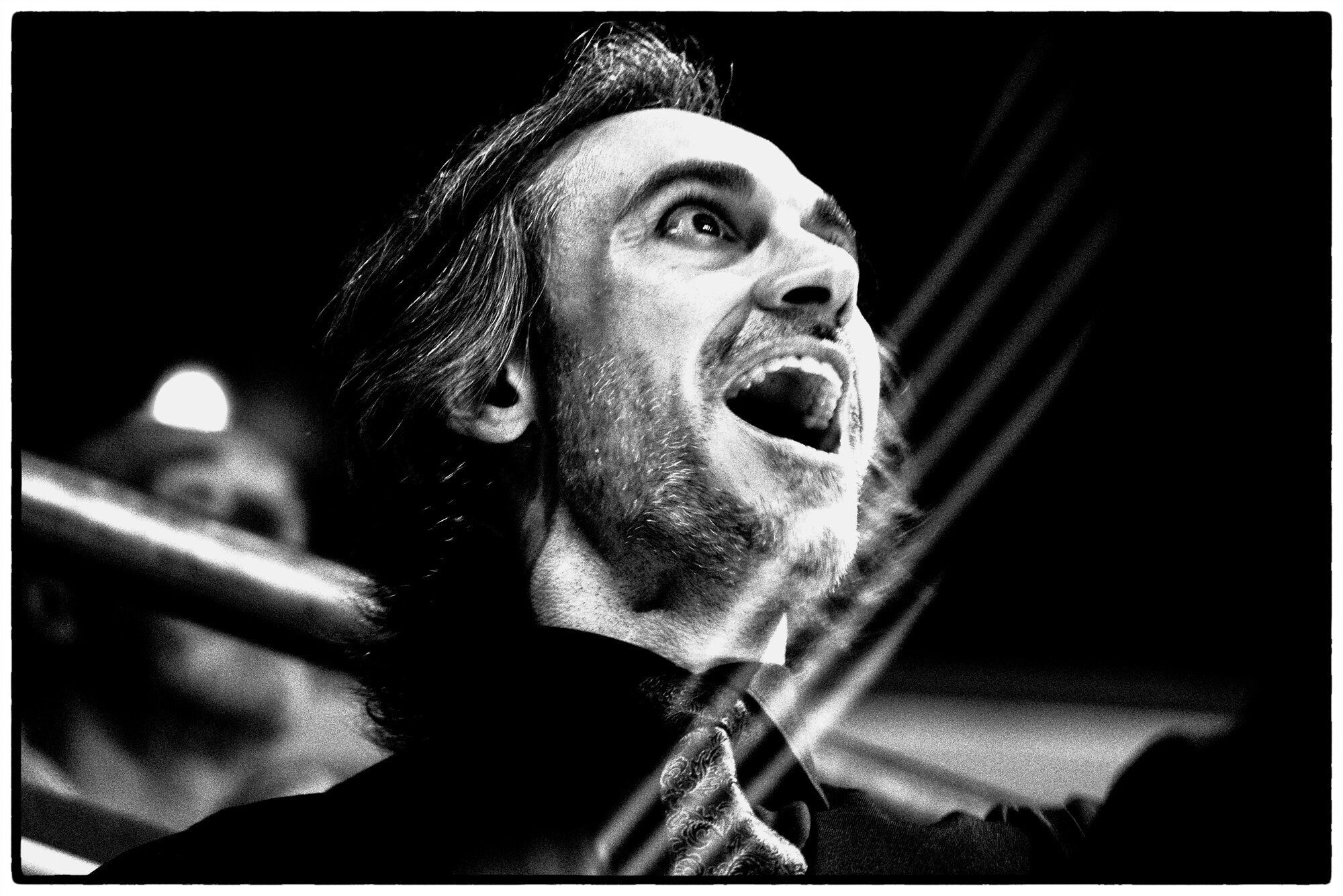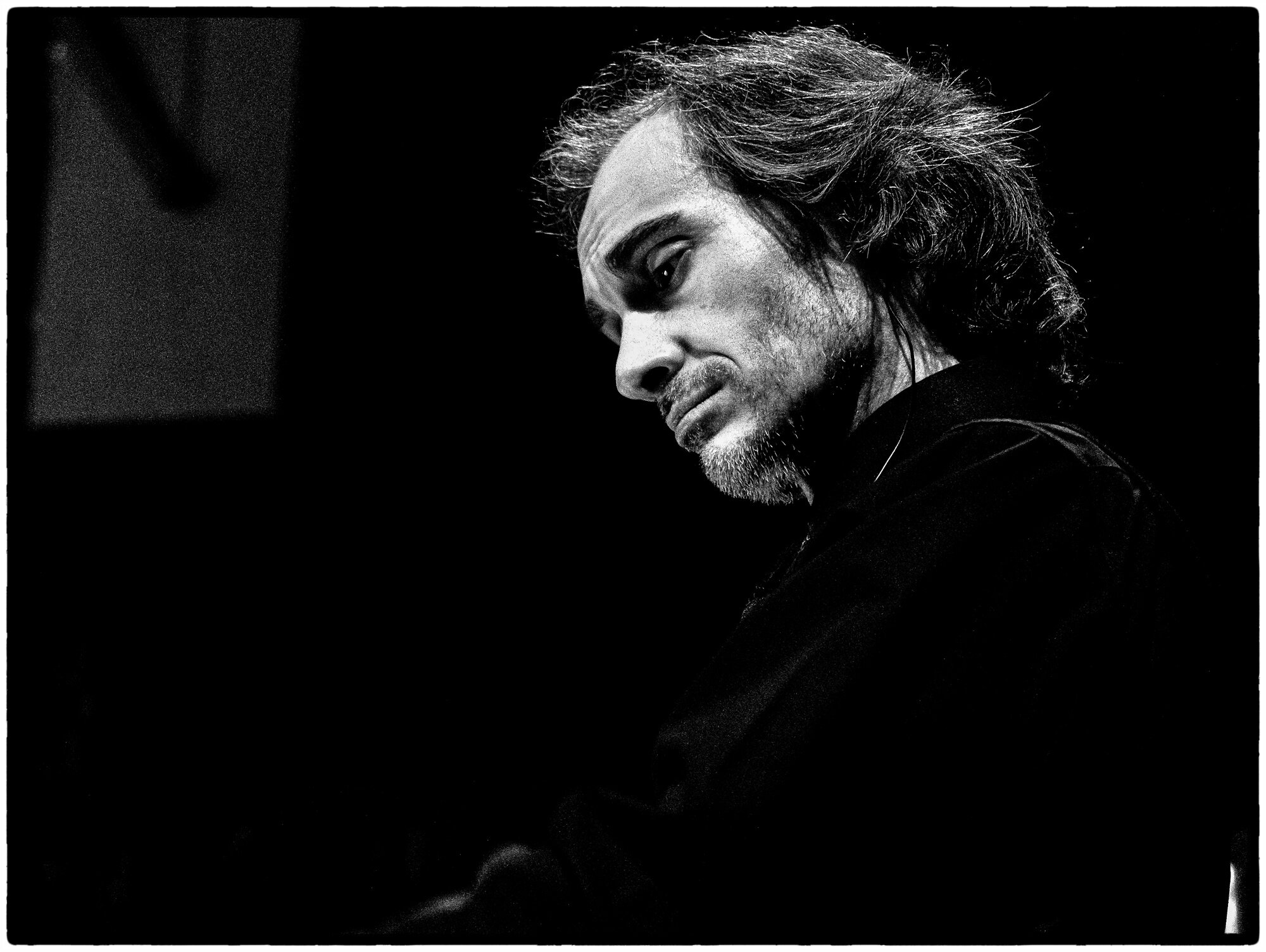A NIGHT IN THE PIT
By Paul Hornsby
This is an environment I know very well but as a musician and not a photographer. Theatre photography is an area I’ve always wanted to try. I’ve worked in many theatres in Wales and England as a gigging ‘pit’ musician during the last forty years or so. It can be a very special place, intimate, occasionally intense nearly always business-like and focused. Pit musicians have to be able to turn on a great performance, instantly and sometimes after long periods of doing very little. Theatre work is quite a craft and there’s often a great sense of camaraderie. I’d often thought that I’d really enjoy a three-hour theatre photography session documenting some of the moments that typically happen in the orchestra pit. When I discovered that a good friend of mine was on a UK tour with The Sound of Music I asked her if she could approach the music director to see if he’d grant permission for me to sit amongst the musicians and take photographs. I was delighted when he agreed. Here was my chance!
I arrived at the theatre in plenty of time to find some of the best locations to shoot from but also to meet all of the musicians, firstly to thank them and to explain what I was doing and secondly to tell them to ignore me. Shooting in an orchestra pit environment can pose some very special problems for the photographer. Low light and camera noise are certainly at the top of my list. This was the first time I’d used my new Fujifilm X-T2 camera in this type of situation. Technically the Fuji offered some big advantages. Many Fuji lenses have Optical Image Stabilisation (OIS) and this is implemented brilliantly. Also, the camera has two basic ways of operating the shutter, mechanically or electronically. In this latter mode, it’s quite possible to set the camera up to be able to shoot completely silently. I mean completely silent!
The only disadvantage of using the electronic shutter can happen under certain lighting conditions. This shows up as a strobing effect. The Fuji XT2 was incredible and performed brilliantly. I managed to use both types of shutter mechanisms during the performance. The mechanical shutter during loud passages of music and the electronic (silent) shutter during periods of no musical activity. Lenses used were a Fuji X 10mm-24mm a Fuji X 50mm F1.2 and even a Fuji X 100mm-400mm zoom (handheld!)
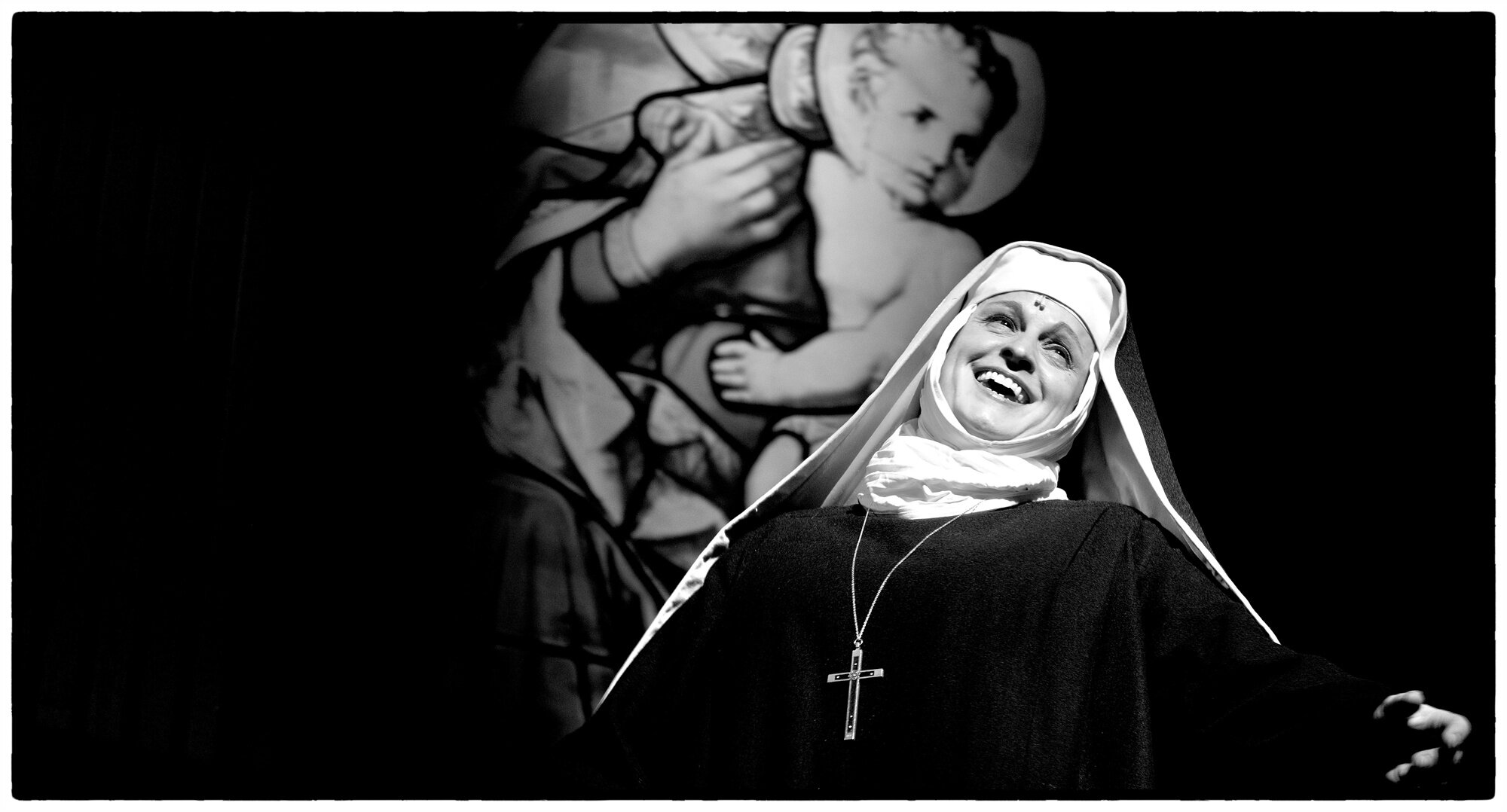

MORE ABOUT PAUL:
It all started for me a long time ago in 1975. I’d had no interest in photography at all, not in the slightest. I’d owned a Kodak Instamatic camera as a teenager but that was about it. At the time I was a full-time music student studying composition and flute at Dartington College of Arts. The largest department was the music one but there was also theatre, dance and art. I’d been studying at Dartington for almost nine months before it happened. I remember walking into the students union on campus to be greeted by an exhibition of students photographic work.
I can still remember clearly the ‘trigger’ that ignited my interest and eventual passion for photography. If I describe the image that kick-started all of this it would probably sound a bit silly and trite, but it wasn’t to me. The image in question was a simple black and white print of an old GPO telephone box door handle, the kind that had a scalloped shape and was chrome plated. It managed to stop me in my tracks. I can remember just staring at it. The photographer had managed to grab my attention and made me really look and focus on what was in front of me; to show me something beautiful in the mundane.
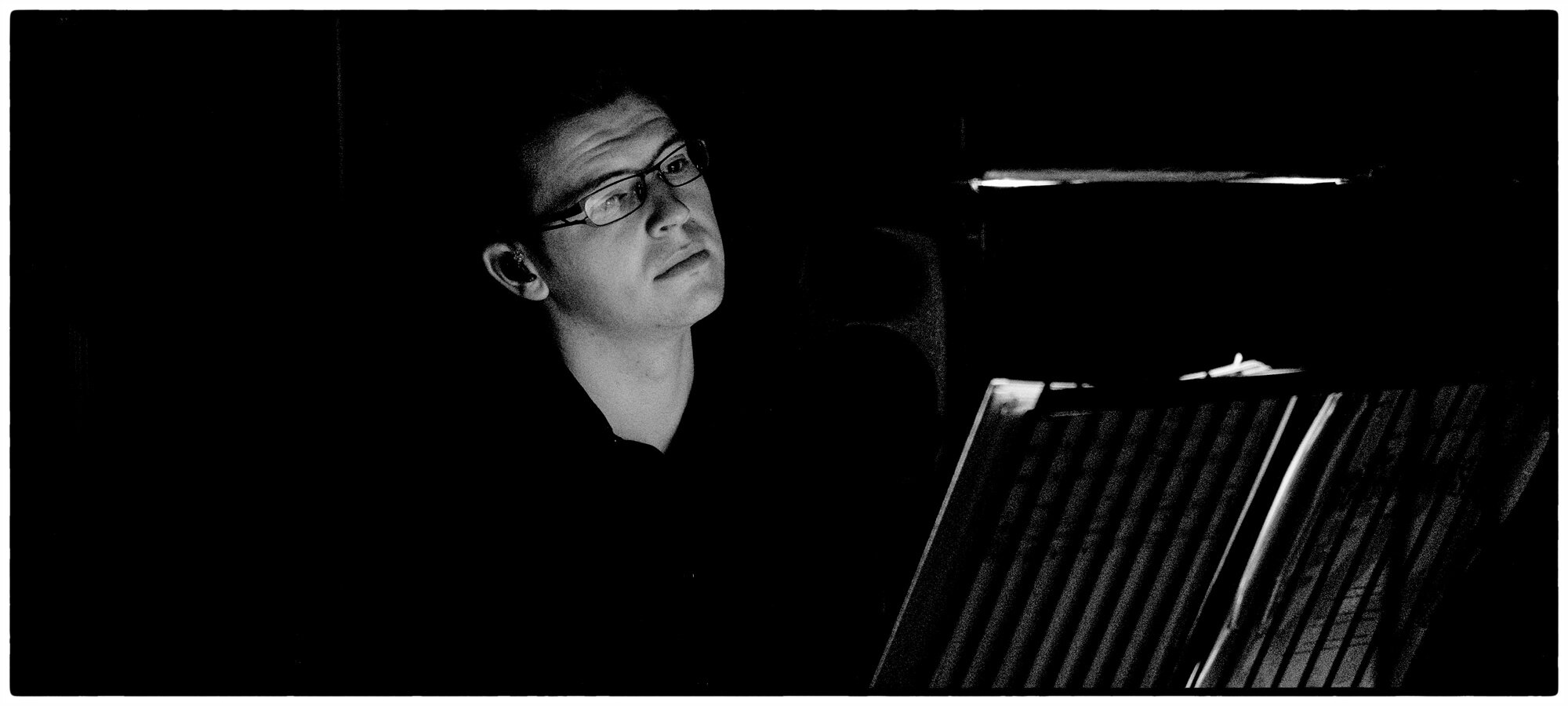
It was an object I’d seen and used hundreds of times before but never realised that it could look so wonderful and so interesting. It was a beautiful photograph, framed, exposed and printed exquisitely. It was in sharp focus where it needed to be with a wide dynamic range yielding deep blacks and bright whites with a fantastic range of tones in between. It had real and unique quality. This was my epiphany. I know that might sound a bit pretentious, but it had a big impact on me. The nearest thing I’d experienced that was anything like that were ‘peak musical experiences. (something I still crave). Anyway, shortly after that, the questions started popping into my head. How did the photographer achieve this? What camera did he/she use? What kind of lens? How was it printed so wonderfully? What was going on here? The learning, the inquisitiveness and the questions had started.
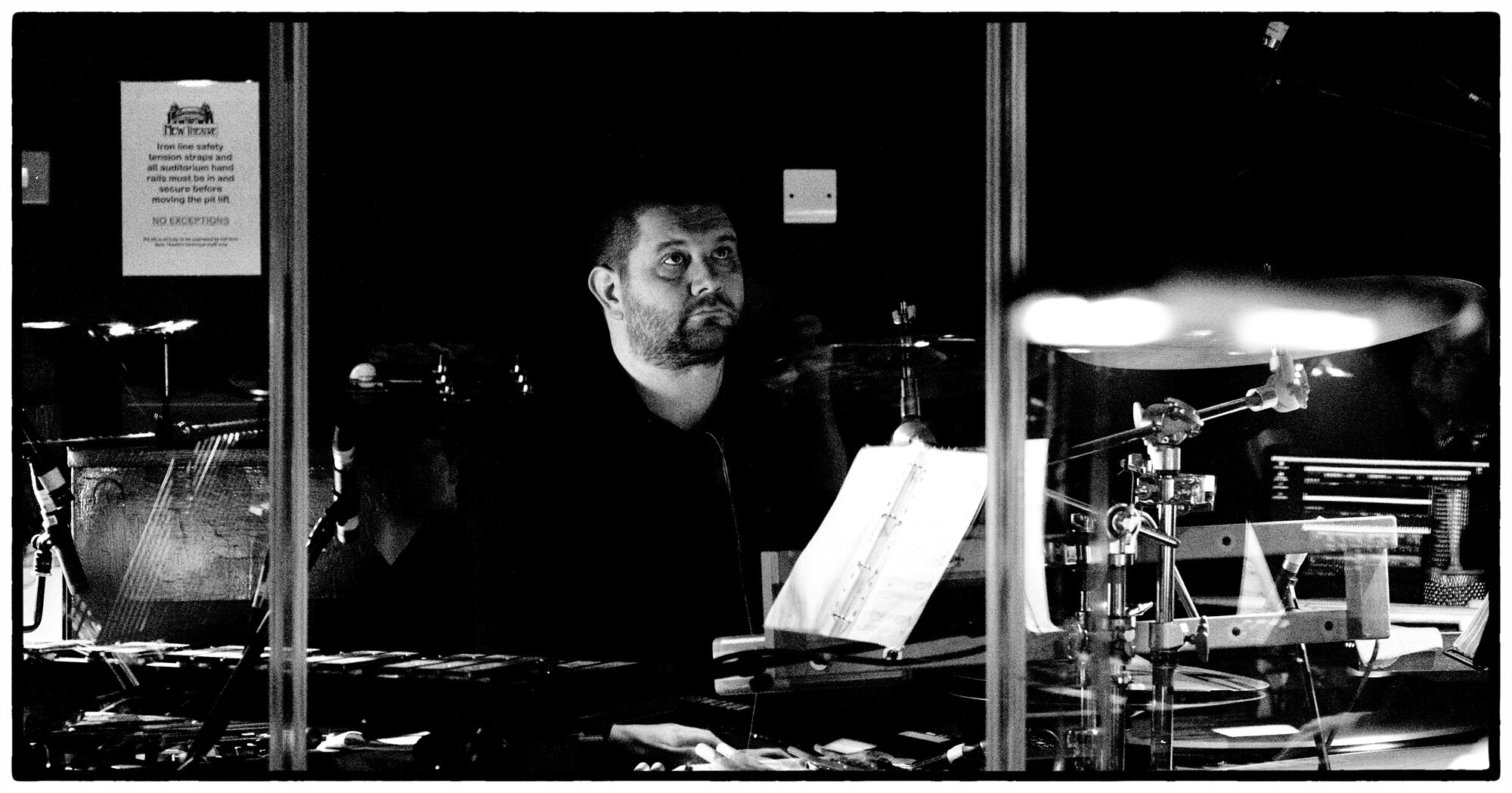

There is definitely an ‘inner game’ in music and most certainly an ‘inner game’ in photography. The ‘inner game’ is the process of improving one’s skills away from the instrument or in this case the camera. Basically that by thinking, analysing and being alert to your subject, its technical and artistic aspects, it is possible to gain confidence, experiment and improve.
I started looking for and ‘tracking down’ great practitioners in no particular chronological or category order. Obvious choices were photographers such as Ansel Adams, the great American landscape photographer, Don McCullen the British photojournalist and war correspondent, Annie Leibowitz the incredible American portrait photographer and many many others. Not only can you get a lifetime’s pleasure from seeing their work but you can learn so much by analysing their technique.
After an extended period of time of doing very little photographically, I’ve experienced a renaissance re photography. A large part of that was my new interest in street/documentary and social realism images aided massively by the ‘retro’ shooting experience that Fuji X technology manages so well. I sold all of my Canon full-frame equipment and invested heavily in Fuji X cameras and GFX medium format.
Photographs copyright Paul Hornsby. Not to be reproduced or used without express permission of the photographer.
